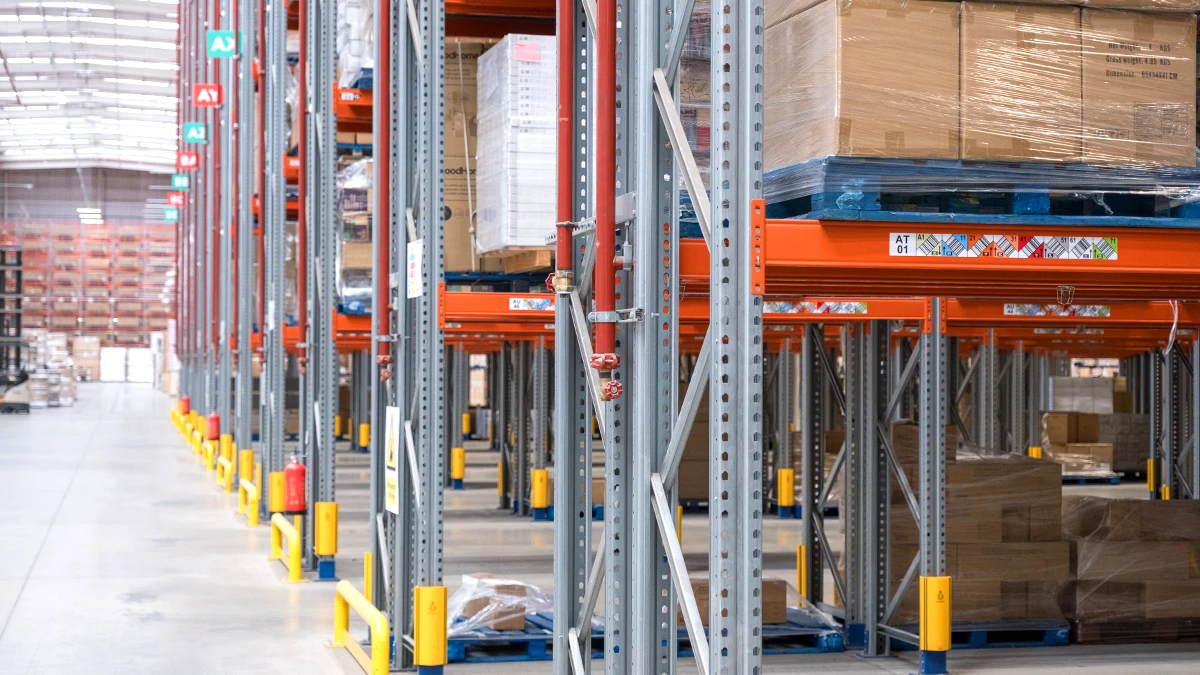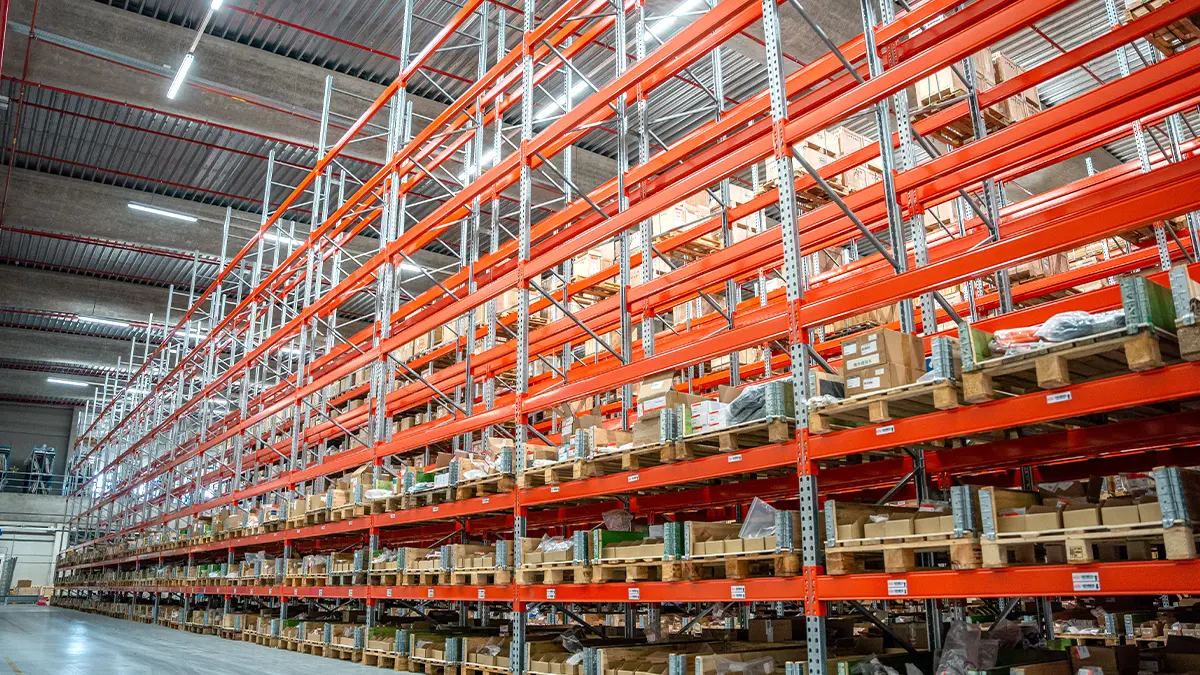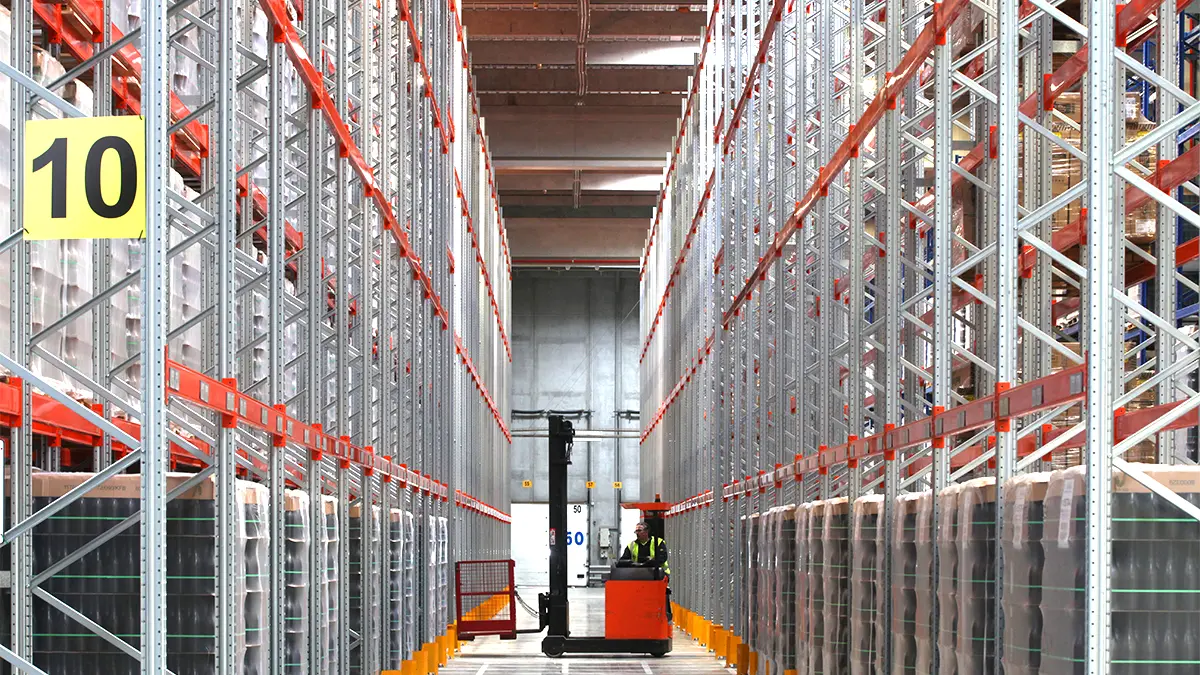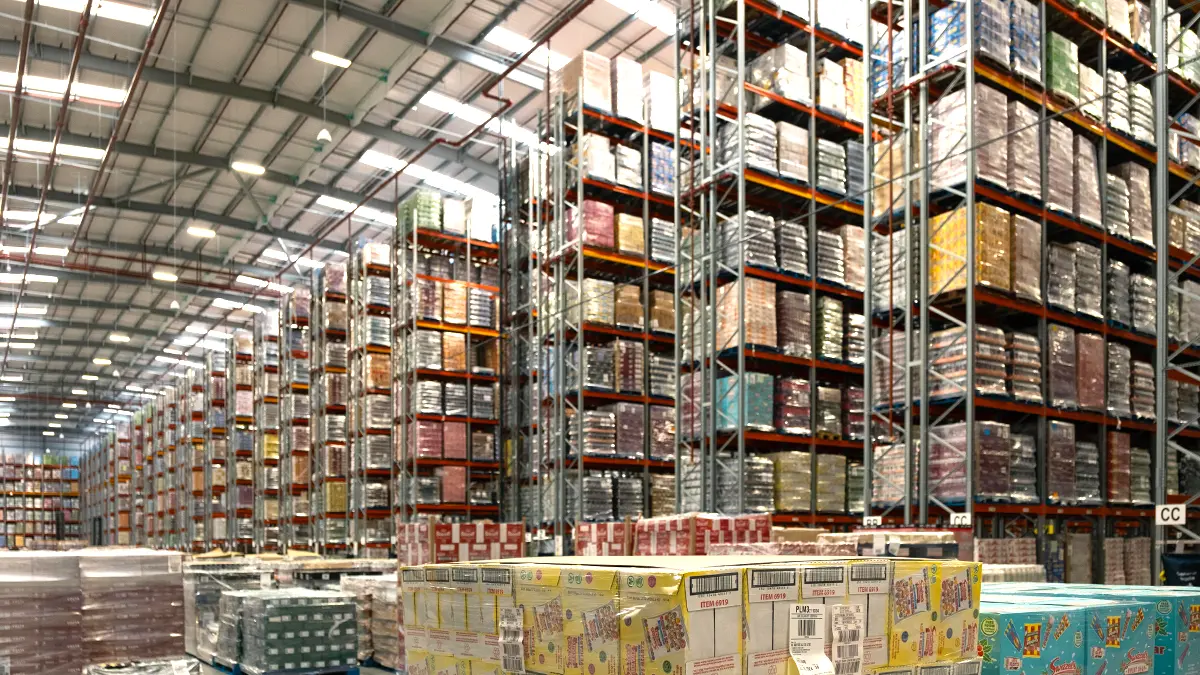In a context of increasing market volatility, global supply chain disruptions, and ever-growing demands for efficiency, traceability, and sustainability, logistics hubs have become an essential element in advanced logistics operations. These centralised platforms allow the consolidation of flows, reduction of lead times, inventory optimization, and improved service to the end customer.
Their relevance has been multiplied by the rise of e-commerce, the decentralization of production, and the need for resilient logistics networks that can respond agilely to crises such as those experienced in recent years. More than mere distribution centres, logistics hubs are strategic value nodes that integrate storage, cross-docking, order picking, and cargo consolidation under a systemic efficiency logic.
This article will delve into what a logistics hub is, its advantages within the supply chain, the technical systems that comprise it, and how industrial storage systems designed by AR Racking enhance its daily operations.
Logistics Hubs as nerve centres in the supply chain
A logistics hub is a central infrastructure acting as a connection point between different links in the supply chain. From these centres, inbound, storage, processing, and outbound operations are coordinated, functioning as structural axes between suppliers, production centres, and destination markets.
Its main objective is to concentrate logistics flows and then redistribute them efficiently, reducing traveled distances, transportation costs, transit times, and distributed inventory levels across the network. Strategically, they enable the implementation of more agile logistics models, such as just-in-time, and enhance product visibility and traceability.
There are different types of hubs depending on their main function: distribution platforms, consolidation centres, regional or international centres, and sorting or cross-docking nodes. What they all have in common is their role as structural elements in the architecture of a modern, flexible, and robust supply chain.
Logistical and financial benefits of operating a Logistics Hub
Having a well-designed and managed logistics hub offers multiple operational and financial benefits. First, centralizing operations allows greater inventory control, significantly reducing safety stock distributed across multiple points. This translates into lower storage costs and higher turnover.
From an operational perspective, transport routes become more efficient, empty miles are reduced, and vehicle utilisation improves thanks to centralised and synchronized planning. Moreover, the strategic location of hubs facilitates serving multiple markets from a single point, reducing delivery lead times and increasing responsiveness during demand peaks.
The most notable benefits include:
- Reduction of total logistics costs (storage + transport).
- Shorter delivery times and improved service levels.
- Greater efficiency in inventory management.
- Improved traceability and operational control.
- Ability to absorb demand fluctuations without operational collapse.
These outcomes impact not only the bottom line but also customer satisfaction, an increasingly decisive factor in logistics competitiveness.
Critical factors in planning and operating hubs
Designing and operating a logistics hub requires considering multiple technical, technological, and human factors. It is not merely about constructing a large warehouse, but about designing a synchronized operation with logistics architecture that maximises flows, minimizes idle time, and ensures the integrity of stored and handled products.
The most relevant factors include:
- Geostrategic location: must be connected to road, rail, or port networks depending on the type of goods and markets served.
- Installed capacity: in terms of both surface area and usable volume, as well as technical resources (docks, shelving, automation).
- Industrial storage systems: should adapt to the type of goods, rotation, and picking requirements.
- Technological integration: with warehouse management systems (WMS), traceability, IoT, and ERP systems.
- Safety and regulations: compliance with quality, safety, and sustainability standards.
An efficient operation relies on standardized processes, intensive data use, and a modular, scalable infrastructure capable of growing with the business.
Types of Logistics Hubs
Not all logistics hubs serve the same function or meet the same needs. Their classification depends on factors such as location, distribution reach, markets served, or the type of centralised operations. Understanding their typologies is key to designing an efficient and resilient logistics network.
National or regional distribution platforms
Large hubs that concentrate goods for redistribution to different points within a country or region. They are usually located near major cities or transport nodes to reduce lead times and optimize last-mile routes.
Consolidation centres
Serve as intermediate points where shipments from different origins are grouped to form full and more efficient loads. They reduce transport costs and improve vehicle utilisation, especially useful in networks with multiple suppliers or sectors with highly fragmented orders.
International or global centres
Large-scale hubs that link different international markets. Typically connected to seaports, airports, or major rail corridors, they manage imports, exports, and transit operations.
Cross-Docking or sorting nodes
Their main function is to accelerate goods flow. Instead of storing, they prioritize receiving, sorting, and immediate dispatch to the final destination. Ideal for high-turnover sectors, such as fresh food or e-commerce, where delivery speed is critical.
Urban or last-mile Hubs
Small logistics centres located in or near urban areas, designed to facilitate fast and sustainable deliveries. Often supported by electric vehicles, cargo bikes, or micro-distribution systems to reduce congestion and environmental impact.
Storage Systems as an operational axis within the Hub
In any logistics hub, storage plays a critical role: it is where inbound and outbound flows converge, and where key processes such as consolidation, separation, replenishment, and order picking are executed.
Having industrial shelving systems that fit the specific needs of each hub zone—both in flows and types of goods—is essential to avoid bottlenecks, reduce unnecessary movements, and optimize inventory management.
Additionally, the flexibility and adaptability of storage systems directly affect the hub’s ability to absorb demand variations, incorporate new SKUs, or respond to operational emergencies.
This is where logistics storage engineering takes on a strategic dimension, and where AR Racking solutions offer a clear differential.
Practical applications of AR Racking systems in High-Performance Hubs
The efficiency of a logistics hub largely depends on the ability of its storage systems to support high volumes, facilitate fast turnover, and ensure safety. AR Racking systems provide customized solutions for each need, integrating robustness, advanced industrial design, and compatibility with automation.
The most commonly used systems in logistics hubs include:
- Adjustable Pallet Racking: versatile, scalable, compatible with picking and mechanical handling.
- Live Pallet Racking (FIFO): ideal for high-turnover products, offering great efficiency in FIFO operations.
- Drive-in Racking: optimizes space in hubs with homogeneous SKUs and large volumes.
- Pallet Shuttle System: partial automation combining storage density with operational agility.
- Carton Live Storage: enables rapid order preparation with ergonomics and high turnover.
- Mobile Pallet Racking: increases capacity without expanding floor area, ideal for urban hubs or limited-space environments.
These solutions can be combined within a single hub according to operational zones, product types, and desired flows.
Implementation and commissioning of an efficient Hub
Implementing a logistics hub requires a strategic design phase followed by rigorous technical execution. Keys for an efficient launch include:
- Study of current flows and growth projection.
- Layout and material flow simulation.
- Selection of the appropriate storage system.
- Integration with WMS and picking technologies.
- Staff training and operational testing.
Technical support in this phase is critical to ensure project feasibility. AR Racking provides comprehensive solutions, including design, manufacturing, installation, and maintenance, adapting to each hub type and sector.
Common challenges: demand peaks, turnover, traceability
Logistics hubs face various operational challenges. The most common include:
- Managing demand peaks that can saturate loading or picking areas.
- Inefficient turnover, causing stock accumulation and slowing processes.
- Lack of traceability, hindering incident or returns management.
- System incompatibility, generating information silos.
Solutions include:
- Designing zones with shelving suitable for actual product turnover.
- Automating repetitive processes.
- Integrating real-time tracking technologies.
- Establishing preventive and corrective maintenance protocols.
Innovation and Sustainability in the Hubs of the future
Future logistics hubs will be intelligent, energy-efficient, and customer-oriented platforms. Sustainability is not just an added value but a requirement in environments with increasingly strict environmental regulations.
Key trends include:
- Intelligent automation via AGVs, robotics, and advanced analytics.
- Energy management with LED lighting, renewable energy, and ISO 50001.
- Sustainable design: recyclable materials, green roofs, reverse logistics.
- Full digitisation of processes with IoT, AI, and augmented reality.
Incorporating these approaches from the design stage is key to ensuring resilient and sustainable hubs in the long term.
Conclusion
Logistics hubs are not just operational centres but strategic assets defining the efficiency, competitiveness, and adaptability of the supply chain. Designing and implementing them with technical vision, integrating appropriate storage systems, is essential to ensure their performance and future evolution.
Contact AR Racking’s technical-commercial team for personalized advice to develop a storage solution that boosts the performance of your logistics hub. Our specialized team will guide you in maximising efficiency, sustainability, and scalability of your operations, integrating the most advanced technologies in the logistics-industrial sector.




